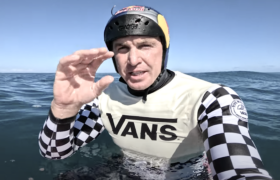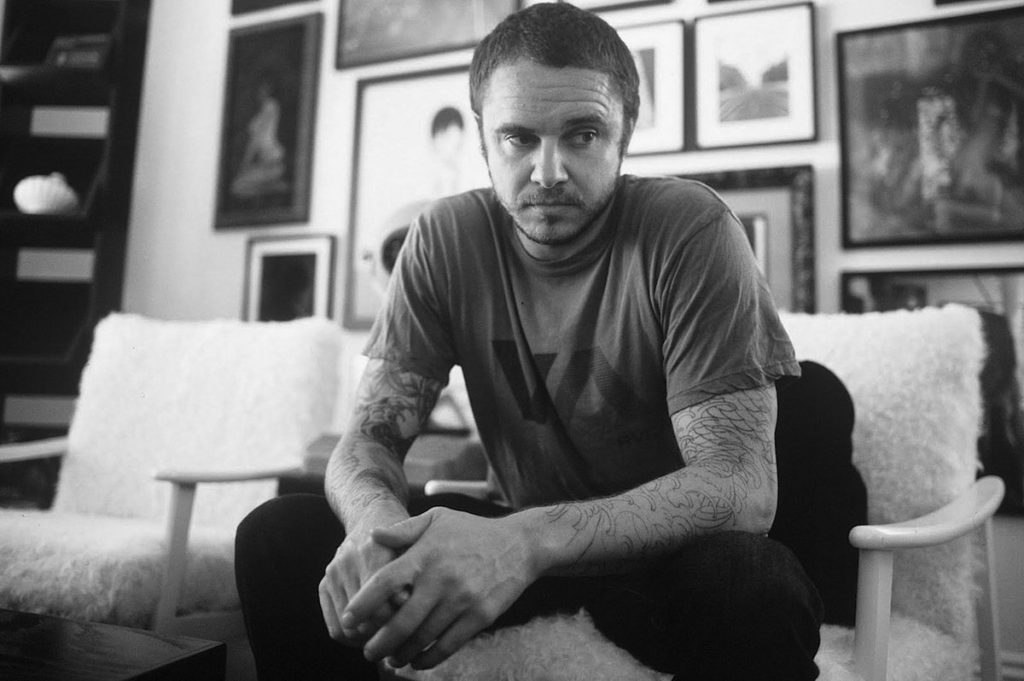Help lil brothers without dads…
Joe Sigurdson isn’t afraid to talk about his darkest days.
“I was 28 years old living a double-life,” he says. “I was dealing dope in the parking lot while my kids were building sandcastles on the beach. I was running poundage up and down between San Diego and LA. I was pretty big, a substantial guy, so I was doing ‘collections’ for a coke dealer too… All the while I was married with a real job.”
Thirty years after turning his life around, Sigurdson is still an imposing figure.
But, his biggest threat these days are his bear hugs.
Joe turned Disney dad shortly after he got sober in the early nineties.
Pretty soon, other kids from his son’s Little League team were at his house all day after practices and games.
“They’d raid our fridge. We’d play ball in the yard. I’d play quarterback for both sides. I’d pitch. I’d take ‘em surfing… It was fun, but they wouldn’t want to go home.”
Eventually, he noticed a pattern.
“One by one, their moms started calling, asking if I could talk to their sons about problems they were having. That’s when I realized none of them had dads.”
When those calls kept coming his wheels started turning.
“I’d learned so much at these self-improvement outings like the Mankind Project. I was forty then going, ‘Man, this stuff is great. I could have used this when I was 14.’”
Which is how Boys to Men Mentoring came to be.
Joe and his co-founders are more than twenty years into their mission now, having transformed the lives of thousands of at-risk boys living in marginalized communities by providing them love and support.
“It’s not rocket science,” says Joe, when talking about why they succeed. “We all do better when we check in with loved ones and hold each other accountable.”
It’s worth noting, his mentors abide by one very strict rule.
“We never tell kids what to do,” says Joe. “Our job is to listen and understand the issues they’re facing. And if there’s a struggle we explore the options and shed light on what’s likely to happen if they stay on the current path. Mentors share their own experiences, mistakes, and lessons learned. But the choice is all theirs. All we do is take an inventory of how those decisions play out. And it works.”
Dana Wright, a former principal at Spring Valley Academy, swears by their success, and she’s not alone.
“If I had a chance to talk to every middle school administrator in the country about what they could do to make a difference it would be Boys to Men,” she says.
And what’s fascinating about Boys to Men Mentoring, is the San Diego surfing community powers their operation.
Surfers have rallied behind the cause, helping Joe and his team come up with creative ways to raise the funds needed to facilitate new programs, find mentors, and expand into new schools.
The 100 Wave Challenge, an annual Jog-a-Thon style event in the waves, is their biggest hit.
The 10th annual 100 Wave Challenge raised $430,000 last year, enough to provide a year’s worth of mentorship services to nearly 1000 kids.
Sadly, with the world going sideways in 2020 the need for Boys to Men is greater than ever. Keeping them engaged and connected is crucial to their health and safety.
Yet early this summer, Sigurdson warned his supporters that this year’s 100 Wave Challenge may not happen, and by some miracle it did, it certainly couldn’t be on the usual scale, with hundreds showing up in Mission Beach.
“That didn’t sit well with anyone,” says Joe.
His fellow surfers floated an alternative: let’s expand.
After all, they argued, Boys to Men’s impact is global now.
Sure, San Diego is where it all started, but they provide guidance to independent chapters in seventeen different states and nine different countries at HQ.
Why not reflect that?
After several Zoom calls, Joe and his team obliged, adding a new twist.
This year it’s “Your 100 Wave Challenge.”
You pick the crew, the beach, and the time, between now and November 22nd, and make it happen.
“Two months ago, we were feeling pretty hopeless,” says Sigurdson. “Thanks to our surfers, I’m starting to believe this may end up being our biggest year yet. Our big signup push doesn’t typically start until after Labor Day, but word is already spreading through surf clubs and surf shops and social media. And our surfers are getting calls from people asking how they can help.”
The answer is simple: Grab some friends, get ‘em together, and give these kids your love.
(Warning: vid below is tear jerker.)







